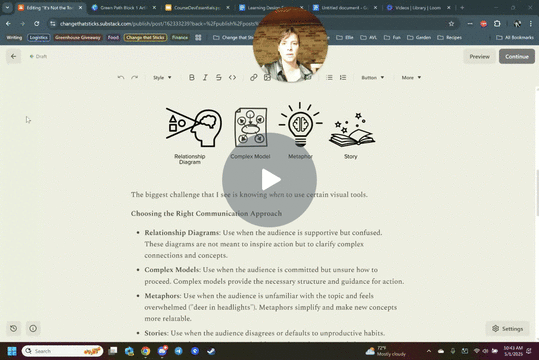It’s Not the Tools; It’s How You Use Them
The Green Path - Inspired Block Series
When I first declared myself an artist and committed to watercolor lessons, I did what any eager (and admittedly privileged) beginner might do: I went shopping. I bought an assortment of pricey watercolor pads …cold press, hot press, various weights… without the faintest clue what any of it really meant. I splurged on a rainbow of top-tier Winsor & Newton paints and, naturally, only the finest brushes money could buy. Then I sat back, fully expecting brilliance to arrive at any minute.
Al, my instructor and very patient tutor, who is a seasoned artist with fifty years of stunning work behind him, took one look at my sparkling new supplies and just shook his head. I’ll never forget what he said:
"You know, you have way better stuff than I do. It's not the tools. It's about finding the art inside you."
We live in a world where there are limitless tools for engaging humans in acquiring skills. But the secret to our success with engaging is ultimately our authenticity, our compassion, and fully understanding each tool’s function.
The first two, authenticity and compassion, come within us.
The third one, fully understanding each tool’s function, can be taught. And that is what my newsletter addresses.
So let’s review this past month of April where I focused on sharing visuals tools to create connections. I focused on
when to use the visual tool,
why to use the visual tool, and
how to use the visual tool.
The biggest challenge that I see is knowing when to use certain visual tools.
Choosing the Right Communication Approach
Relationship Diagrams: Use when the audience is supportive but confused. These diagrams are not meant to inspire action but to clarify complex connections and concepts.
Complex Models: Use when the audience is committed but unsure how to proceed. Complex models provide the necessary structure and guidance for action.
Metaphors: Use when the audience is unfamiliar with the topic and feels overwhelmed ("deer in headlights"). Metaphors simplify and make new concepts more relatable.
Stories: Use when the audience disagrees or defaults to unproductive habits. Stories can reframe perspectives, build empathy, and encourage behavior change.
For more details on each visual tool, please check out the individual post.
Are you a free subscriber? If so, I’m excited to give you a glimpse of the kind of video content normally reserved for paid members. It’s a chance for you to see the quality and depth you can expect — and more importantly, to help you decide if investing in a full subscription is the right next step for you.
If this had been a paid post, the information below is what a subscriber would expect behind the paywall, which is always the application of the free content with examples.
Video Notes:
Walking through the decision tree provided in post. Using examples based on real life experiences.
Example One:
Success story of training instructional designers.
Example Two:
Failure story of training instructional designers.
Example Three:
Coached subject matter experts in designing their content for delivery.








